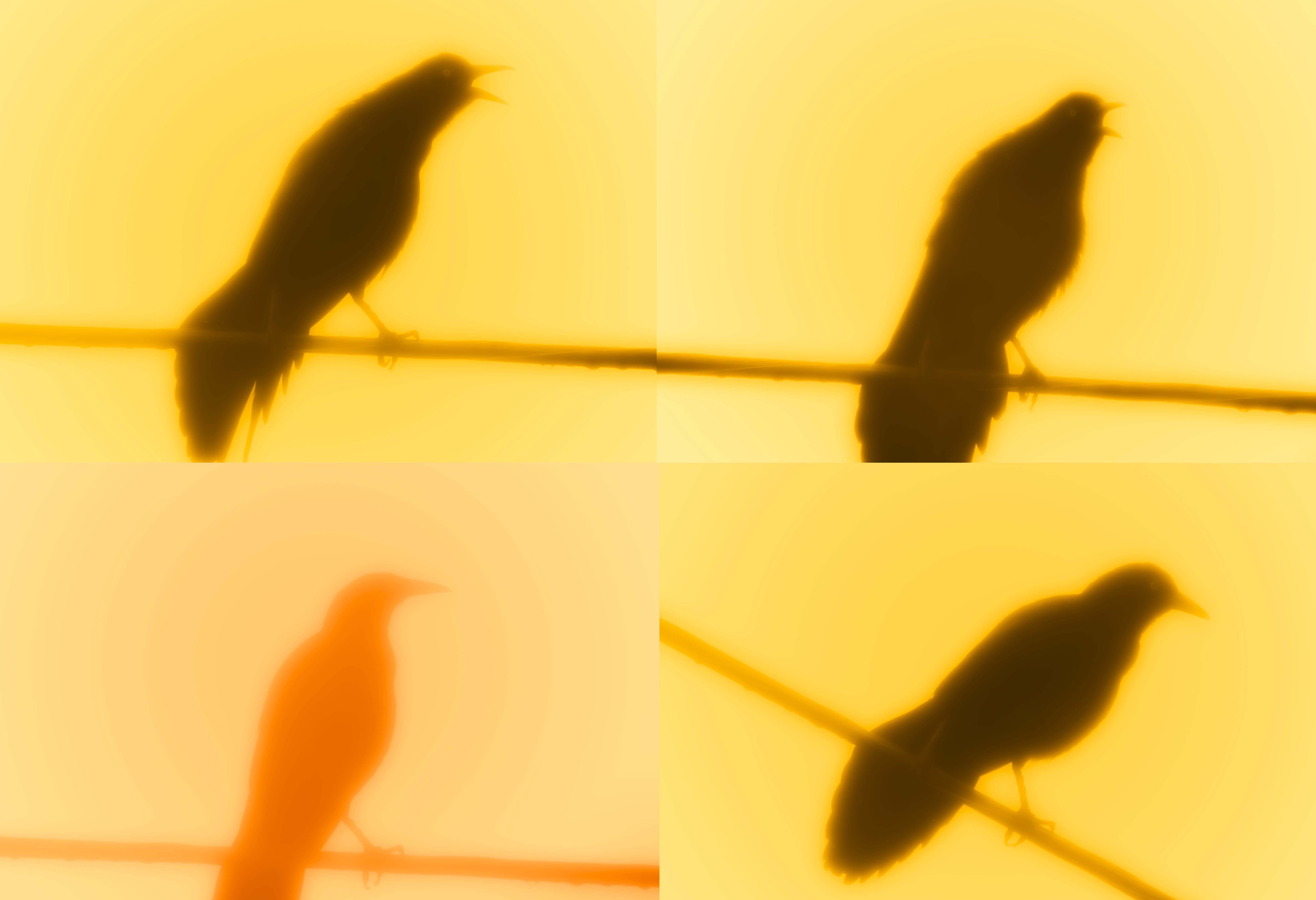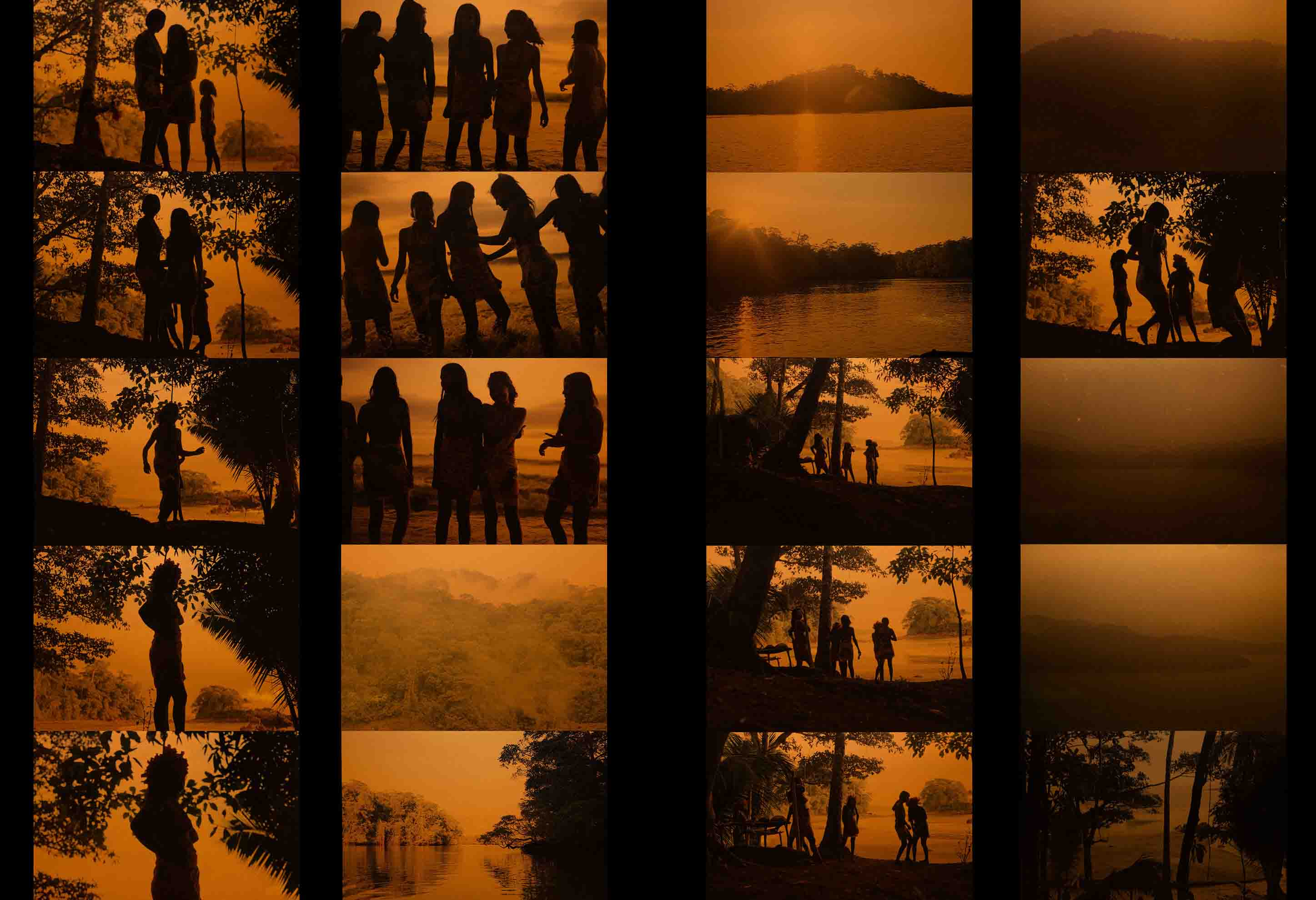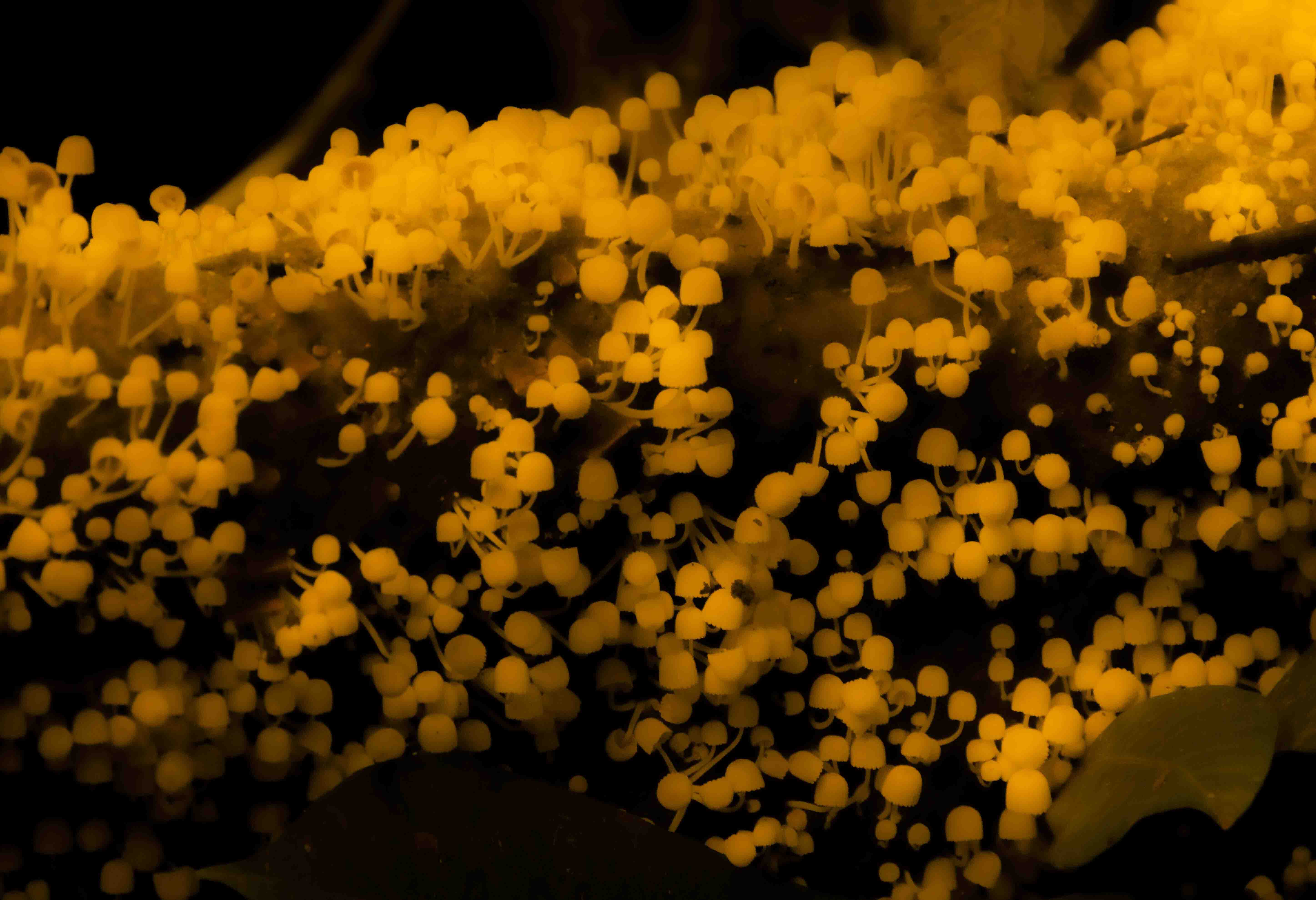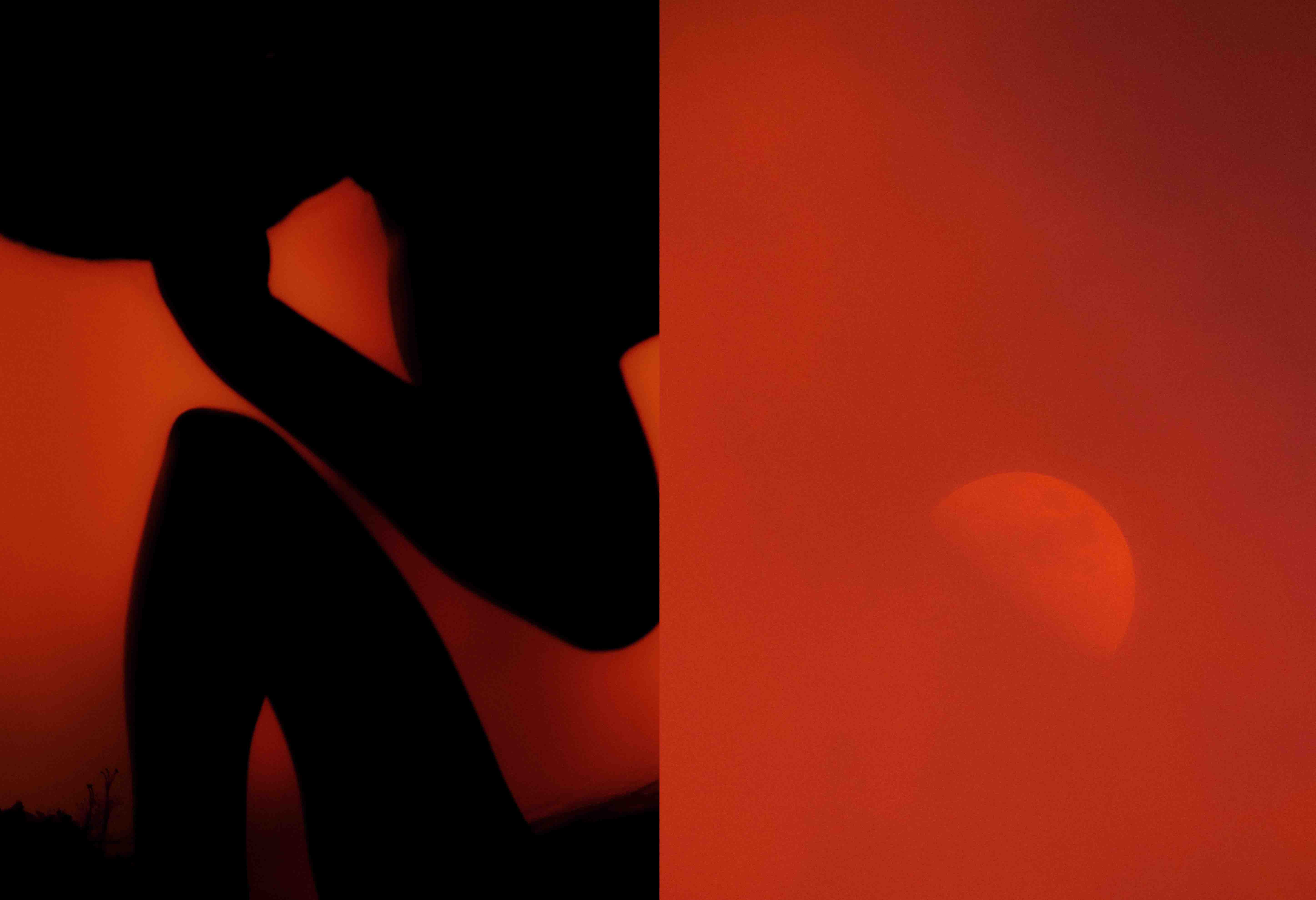
It is a grey autumn morning in Leyden, the old university city in the west of the Netherlands that is my hometown, and I find myself zigzagging the narrow alleys behind the houses facing the Breestraat, the city’s main drag. I had promised my wife to buy some vegetables at the Saturday market, but as an urban naturalist my gaze as well as my feet are constantly drawn by the non-human inhabitants of the city.
Carrying my still-empty shopping bag, I stop to gaze at the lush growth of wall-rue (Asplenium ruta-muraria) on the art deco police station and notice how it has expanded over the summer. I hear shrieks in the air and looking up I see a fast and noisy flight of exotic ring-necked parakeets (Psittacula krameri) heading towards the residential areas, their main daytime feeding ground. Ambling on, I find a fat female bridge spider (Larinioides sclopetarius) who is weaving her web near a lamp on the bridge across the canal. Wood ear mushrooms (Auricularia auricula-judae) emerge in wild, floppy-wet profusion from the bridge’s old wooden railings. Across the water, a mole (Talpa europaea) has made fresh burrows and the consequent molehills in the lawn of the Van der Werff Park, next to the old natural history museum where I used to work.
At the time that Leyden was founded, sometime in the early middle ages, human settlements in this part of the low countries were few and far between. Sitting on the confluence of two branches of the Rhine, it and its human-made hill-with-fortress commanded a strategical position in this area of swamps, dunes, rivers, and forests. Similar settlements dotted the landscape here and there, but by and large, the country at that time was still largely natural. The forces of nature had free rein in what essentially was one big estuary, and the large populations of wild animals and plants mostly went about their business unhindered by people, rarely if ever interacting with the occasional hunter or farmer.
Today, the city’s topography still bears the traces of having been built among a meandering set of rivers with streets and alleys in the old city centre following the paths of long-gone creeks, tributaries and rows of sand dunes. But otherwise Leyden has firmly set foot in the modern metropolitan world. No longer is it a human-made dot in a vast wild landscape. Instead, it is a bustling city of 125,000 inhabitants, part of the Dutch urban conglomeration known as Randstad, which holds over 8 million people.
Leyden’s growth from a small human settlement in the middle of (what today we would call) wilderness into an urban landscape with few small remaining pockets of nature is representative of most parts of the inhabited world. Where cities in the past were urban islands in a sea of nature, the situation today is reversed, and wild animals and plants are constantly encountering humans and their anthropogenic world. The Pearl River Delta in eastern China, for example, is entirely urbanized, with 140 million people crammed together in an area the size of Belgium. It drives home the point that today, there are places on earth the size of an entire country where traditional nature has been completely squeezed out.
And yet, as my quick listing of the urban animals and plants on my shopping walk through my hometown shows, this does not mean that cities are devoid of nature. Quite the contrary: worldwide, urban biologists are discovering that cities are pressure cookers of evolution, and that an entirely new, urban ecosystem is being formed as we speak.

To explain what I see happening in cities I often invoke the wonderful creatures called myrmecophiles. A myrmecophile is a small invertebrate animal that spends its entire lifecycle inside an ant’s nest. Over the course of its evolution it has evolved the ability to speak “ant”, the chemical communication system that ants use among themselves. Chattering in “ant”, appeasing its hosts, the myrmecophile (a rove beetle, for example), will move unhindered around the nest, feeding on the colony’s eggs and larvae, or scavenging the leftovers of the ants’ meals. There are thousands of species of myrmecophiles in the world (beetles, mites, millipedes, but also caterpillars, snails and woodlice). The cause behind this evolutionary profusion is that ants are so-called ecosystem engineers: they modify their environment in such a way that new niches appear for other species. Their colonies offer unimaginable opportunities: ants harvest food and other resources in the vast hinterland of their nest and concentrate this in their nest, providing new opportunities for other species to move in with them.
For millions of years, ants were the world’s main ecosystem engineers. But over the past few decades, we humans have taken over that role. Like ants, we harvest food and other materials in rural areas and move these into our cities to keep them running. Thus, our human equivalents of ant colonies offer enormous riches to species that are able to live with us, meet the challenges and make use of the opportunities. In other words, we have created an evolutionary landscape: a situation where potential benefits lie, and at the same time new risks and challenges – a situation set up for fast, pervasive natural selection.
But what exactly are those opportunities and challenges? And how would evolution cause wild animals and plants to adapt to them? As I continue my walk though Leyden, and my chances of ever reaching the market before closing time dwindle, I see answers to this question.
One answer is something called pre-adaptation. The wall-rue that I saw growing on the old walls of the police station, for example, is a plant species that has been able to colonize the Netherlands thanks to cities. For it is a rock-dwelling species. Its natural niches are stark rock faces and cliffs in the more mountainous parts of Europe. Being an entirely swampy country, devoid of any natural rocks, the Netherlands was a no-go area for Asplenium ruta-muraria until humans began building stone houses and thereby allowing the “pre-adapted” plant to settle in this artificial landscape of cliffs. The same goes for other organisms that rely on rocky habitats and now are common city dwellers in Leyden: the swifts (Apus apus) that sweep the sky in summer; the rock doves (Columba livia) that wait for scraps in the market, and the peregrine falcon (Falco peregrinus) that perches on the chimney of the power station, scanning the sky for lunch options. They too have become urban animals thanks to their pre-adaptation to cliffs.

Another answer is the natural selection caused by the city’s physical fabric. Think of temperature, for example. Leyden is a small city where hundreds of thousands of people carry out their daily comings and goings and run their vehicles and other machines. All this activity creates heat that remains trapped among the tall buildings that block the wind. Those buildings themselves also absorb heat and radiate it out at night. The result is a city centre bubble of hot air. Even in a small city like Leyden this can mean that it is some two degrees Celcius warmer than at the same time in the countryside outside Leyden. And this “urban heat island” creates even greater spikes in the temperature of larger cities. The heat island of New Orleans, for example, is on average five degrees Celcius warmer than outside the city, and on certain hot, calm days the difference can rise to ten, twelve degrees.
I can see the effects of this in the streets of Leyden. The Cepaea nemoralis land snails that sit on the walls in the city centre are noticeably pale-shelled. I am not surprised. A few years ago, my students and I did a citizen science project (using an app called SnailSnap) in the Netherlands in which we asked the general public to send in photos of snails from urban and non-urban areas. The nearly 10,000 pictures that we received showed a clear pattern of pale shells in cities, darker shells outside of cities. Since snail shell color is encoded in their DNA, this was a clear case of urban evolution, caused by the heat island. Dark shells absorb more heat than light ones, and generations of dark-shelled snails perishing in the urban heat island has caused urban snails to become paler.
Those pale-shelled city snails are one of many clear examples of urban evolution caused by the physical features of the city, but an even more important factor in driving urban evolution is the biological landscape. Instead of viewing urban animals and plants as just a collection of species, it is helpful to view them as a network of ecological interactions where each species depends (for food, shelter or other things) on another species, and itself in turn is also essential for the survival of other species. In that sense, the urban habitat with all its peculiarities is just an ecosystem like any other. But there is an important difference. Human economic activities are concentrated in urban centres, and many of those activities involve the shipping of animals and plants from other parts of the world. Accidental or intentional releases often happen in the pet and aquarium trade. The agricultural and gardening trade even depend on moving exotic species into the environment. The result is an urban ecosystem in which, unlike in most natural ecosystems, species from all over the world live together.

In a residential area in the south of Leyden I chance upon a scene that could not have existed without these species-importing processes: I see a group of ring-necked parakeets eating from the fruits of a horse chestnuts (Aesculus hippocastanum), while in the leaves of the tree I spot the markings of a leaf-mining caterpillar, Cameraria ohridella. None of the three species in this miniature food web is indigenous to Leyden. The parakeets come from India and are escapees from the pet trade in the 1970s. Horse chestnuts are from Asia Minor and began to be planted in the Netherlands in the early 1600s (in fact, the very first was planted in the Leyden botanical garden). And nobody knows how the caterpillar, indigenous to Macedonia, reached here. The point is, these three species have been ecologically introduced to each other by us and the food web they form exists thanks to urbanization.
What this means is that urban food webs are entirely new constellations of both native and non-native species. In cities, species feed on, are preyed upon and compete with other species that they have never evolved to deal with. This unique biology, in addition to the physical features of cities, drives those rapid processes of urban evolutionary adaptation.
Of course, urbanization also creates losses: many animals, plants and fungi simply cannot deal with the drastic change that dense human settlement brings, and they locally go extinct. But others can and do adapt, natural selection rapidly changing their genomes. While we do and should lament the losses of wild nature, at the same time it is crucial to understand and appreciate that we live in a unique moment in the history of life on earth. Namely, a moment in which we see the global, very fast appearance of a completely new urban ecosystem, with its own ecological features, its own rules and its own grab-bag communities of species.
If we city dwellers would only open our eyes to the fascinating process of urban evolution and the novel ways in which urban biodiversity creates a food web, our enjoyment of living in a city would be enhanced. We may think there is no nature left in our concrete jungles, but if we look carefully, on our daily walks through our neighbourhood, we will see the evidence of a rich and fascinating ecosystem all around us.